News Video
Where to Eat Chiang Rai’s Most Iconic Dishes
CHIANG RAI – When it comes to Thai food, the first dishes that pop to mind are likely pad Thai, green curry, and tom yum. But up north in Chiang Rai, it’s a totally different story.
Unlike more familiar Central Thai food, northern Thai food has been heavily influenced by the nearby hill tribes, as well as neighbouring countries such as Laos and Myanmar. Usually eschewing coconut milk, northern Thai foods tend to be more intense, often including ingredients such as cinnamon, star anise, soya beans, lemongrass, chili and fish sauce.
To soak up the complex sauces, most noodle and curry staples typically arrive with a plate of fresh herbs, sticky rice, or fresh rice noodles. “More so than other regions in Thailand, we tend to eat rice with everything—especially sticky rice,” says Chef Pisan Thorpet, a Chiang Mai native and head chef at the Four Seasons Tented Camp in the Golden Triangle. “There is a famous phrase ‘khup kao’ which literally translates to ‘rice with anything.’”
Khanom Jeen Nam Ngiao

A homey noodle soup unique to northern Thailand, khanom jeen nam ngiao is one of the easiest dishes to find around town. Served with fresh rice noodles, this hearty stew is more like a fatty soup than a curry. Thankfully, crispy pork rinds are almost always on hand to sop up the savoury juices. The base is made from a spicy curry paste and pork broth, and then chunks of ground pork, dried herbs, tomatoes, and cubes of congealed blood are added. To make it your own, add a handful of bean sprouts for a crunchier texture or a spritz of lime to play up the acidity.
Where to try it: Paa Suk (Thanon Pakhun)—affectionately nicknamed Aunty Suk—makes the most famous khanom jeen nam ngiao in Chiang Rai. Serving up just four signature dishes, including both pork and beef nam ngiao, the tiny outfit is known to draw long lines at lunchtime. To avoid the crowds, head there first thing in the morning and dip into a fresh cauldron of pork stew. But do note, the cafe closes at 3:00pm on the dot.
Sai Ua

One of the easiest introductions to northern Thai food is ubiquitous sai ua—aka northern Thai sausage. These meaty coils are a far cry from your average hot dog, featuring a combination of aromatic herbs such as lemongrass, kaffir lime leaves, and galangal—a root from the ginger family. A bit of turmeric gives the sausage a yellow hue, while chili paste adds a subtle touch of heat.
Where to try it: Nearly every street stall and café has its own variety of northern Thai sausage, but one restaurant is said to be the top producer. For a relaxed alfresco atmosphere and a long list of grilled bites, head to Salungkham. The alfresco restaurant is low-key and inviting, with picnic tables set up in a back garden. Grilled meats—including pork ribs and chicken—are a specialty, and the sai ua is not to be missed.
Gaeng Ho

Traditionally an easy, throw-together dish made from leftovers, gaeng ho—also kaeng ho—is a homestyle stir-fry dish that combines pork, bamboo shoots, kaffir lime leaves, lemongrass, chili paste, crispy vegetables and anything else on hand, all served over a mountain of glass noodles. The dish is typically served with a side of homemade chili paste, so you can add the heat to your liking.
Where to try it: Built under a thatched-roof pavilion, Nong Yao Restaurant at the Four Seasons Tented Camp Golden Triangle offers one of the most luxurious Thai culinary experiences in the area. Offering a mix of northern Thai dishes on his menu, Chef Thorpet’s gaeng ho incorporates homemade chili paste and fresh vegetables from the hotel’s garden.
Gaeng Hang Lay

If you’re an apprehensive eater, pork and ginger curry is a safe place to start. But instead of a heavy coconut milk curry, the Lanna-style dish tastes more like a slow-cooked masala stew. Mix together big chunks of fall-apart pork belly, turmeric, lemongrass, galangal, coriander, garlic, peanuts, and a handful of fresh ginger on top—and this curry sings.
Where to try it: Stop into Chivit Thamma Da, just north of the city center. Sourcing ingredients from local producers, the family-run bistro has a sun-soaked spot on the banks of the Kok River and a charming outdoor seating area.
Kaeng Khanun

Also known as jackfruit curry, kaeng khanun soup is usually available in the springtime, starting around March. If the timing works out, jackfruit curry is worth a try. This healthy soup is relatively light, incorporating pork, cherry tomatoes, lemongrass, galangal and, of course, giant chunks of jackfruit. The result is a slightly sour, subtly spicy soup that’s not unlike the more familiar tom yum.
Where to try it: Stretching across a prime spot of real estate along the Kok River, Lu Lam Restaurant offers plenty of space to spread out. The enormous menu covers everything from local favourites like jackfruit curry to wild boar, ostrich and fried insects.
Nam Prik Ong

Akin to a salsa or a dip, nam prik ong is made with dried chilies, jalapenos, fish sauce, cilantro, tomatoes and ground pork. Once blended together the thick consistency is a bit like guacamole. Served alongside a large plate of cabbage, cucumber green beans and often deep-fried pork rinds—this is a delicious way to kicks off a casual Thai meal. There’s a vegetarian-friendly variety too, called nam prik noom, which is made from young green peppers, garlic and shallots.
Where to try it: You can find these staple dips everywhere, from the night markets to street side food stalls. We found one of the more photogenic versions at Lu Lam Restaurant, which serves a fresh spread of cabbage, green beans, cucumbers and pork rinds—encircling an addictive bowl of nam prik ong.
Laap Moo

This isn’t a typical minced pork dish. Fried up with local spices, Chiang Rai-style laap moo is an homage to pork—consisting of everything from skin, offal, and coagulated blood to kidneys, lean meat and liver. Paired with sticky rice and fresh herbs, laap moo diverges from the more typical sweet-and-sour Thai flavours, instead cultivating a heady, intense sauce that’s thickened with pork blood.
Where to try it: An outdoor café with a no-frills setup and a handy picture menu, Lab Sanam Keela is on the east side of town, near Le Meridien Hotel. It’s known as one of the best local restaurants in Chiang Rai and, while it’s not going to win any prizes for decor, the café’s thick and intense laap moo won’t disappoint.
Khao Soi

Perhaps the most famous northern Thai dish is also the most colourful—khao soi is a rich yellow chicken curry that begs to be photographed. Each big bowl is full of thick yellow egg noodles and topped with a towering crown of crispy fried noodles, making for a hearty meal. Originated in Myanmar, the dish typically arrives with a side of pickled cabbage and sliced red onion, and optional crackling pork rinds to sop up the creamy curry sauce.
Where to try it: The eponymous Khao Soi Phor Jai specialises, unsurprisingly, in khao soi. Veering from the normal lineup, the restaurant offers an unconventional option of shrimp and fish khao soi, as well as more traditional chicken. It’s a bit hard to find this cafe as there’s no English sign, but a bright blue interior and an outdoor stall selling sausage should tip you off.
The 7 Must Eats in Chiang Rai Thailand

News Video
China’s Growing Interest in Equestrian Sports and Lifestyle

SHANGHAI – Leather riding boots are neatly lined up on a carpet, a picture shows blood-thirsty hounds on a fox hunt and a fountain spews water from the mouths of stone horses. It may have the trappings of upper-class Britain, but this is in fact suburban Shanghai and the County Down Club, the self-styled first exclusive membership club in China for horsemanship and fox-hunting.
The club, which takes its name from a county in Northern Ireland, was founded three years ago and owner Steven Sun says equestrian sport “has developed rapidly in China during the past five to 10 years”.
“I think it’s a change in awareness,” said the 32-year-old, whose interest in horses was triggered while studying in Britain.
Rising numbers of people in China are taking up sports such as horse riding as the country’s growing economy — now the second biggest after the United States — gives people more disposable income to pursue leisure activities.
County Down has a dozen horses and Sun wants it to be at the forefront of promoting equestrian sports in China.
The club, which also features an indoor swimming pool, gym and sparkling white piano, is just as much about networking as it is horse riding, Sun says.
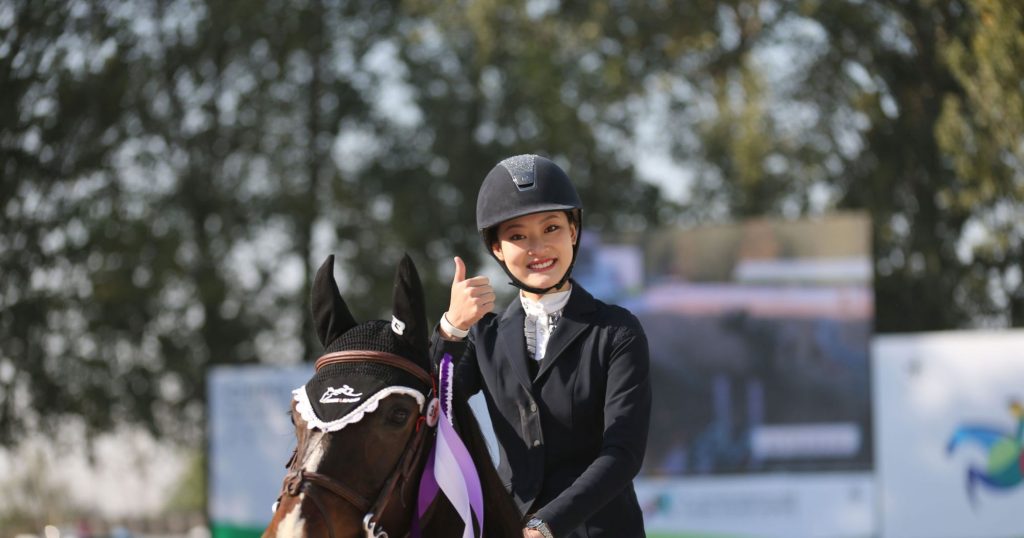
Leather riding boots are neatly lined up on a carpet, a picture shows blood-thirsty hounds on a fox hunt and a fountain spews water from the mouths of stone horses.
It may have the trappings of upper-class Britain, but this is in fact suburban Shanghai and the County Down Club, the self-styled first exclusive membership club in China for horsemanship and fox-hunting.
The club, which takes its name from a county in Northern Ireland, was founded three years ago and owner Steven Sun says equestrian sport “has developed rapidly in China during the past five to 10 years”.
“I think it’s a change in awareness,” said the 32-year-old, whose interest in horses was triggered while studying in Britain.
Rising numbers of Chinese are taking up sports such as horse riding as the country’s growing economy — now the second biggest after the United States — gives people more disposable income to pursue leisure activities. Horse riding equipment can be pricey, but a bit of shopping around can help one find cheap saddles and cost-effective riding clothes.
County Down has a dozen horses and Sun wants it to be at the forefront of promoting equestrian sports in China.
The club, which also features an indoor swimming pool, gym and sparkling white piano, is just as much about networking as it is horse riding, Sun says.

County Down has about 80 members and annual membership is 58,000 yuan ($8,400), but prospective newcomers will need more than just deep pockets. “We hope our members have good qualities and manners or are highly educated elites,” said Sun, in polo shirt and riding trousers.
“That can ensure communication between our members will be at the same level. “One of the benefits is that our members can meet using this platform and push each other forward.”
Sun says he has forged links outside China, too, taking members on fox hunts with European nobility. He also has four racing horses in France.
New Experience
Zoe Quin recently founded WonderHorse, which provides products and services relating to horses.
The industry is “booming” for two main reasons, said Shanghai-based Quin.
“Chinese parents consider horse riding an elite education to make their kids more outstanding in this highly competitive Chinese society,” said Quin, formerly chief representative in China for LeCheval, which promotes the French horse industry.
“As for adults, they can extend their participation in equestrian sports beyond riding into broader aspects such as ownership, investment, travel, leisure and social activities.
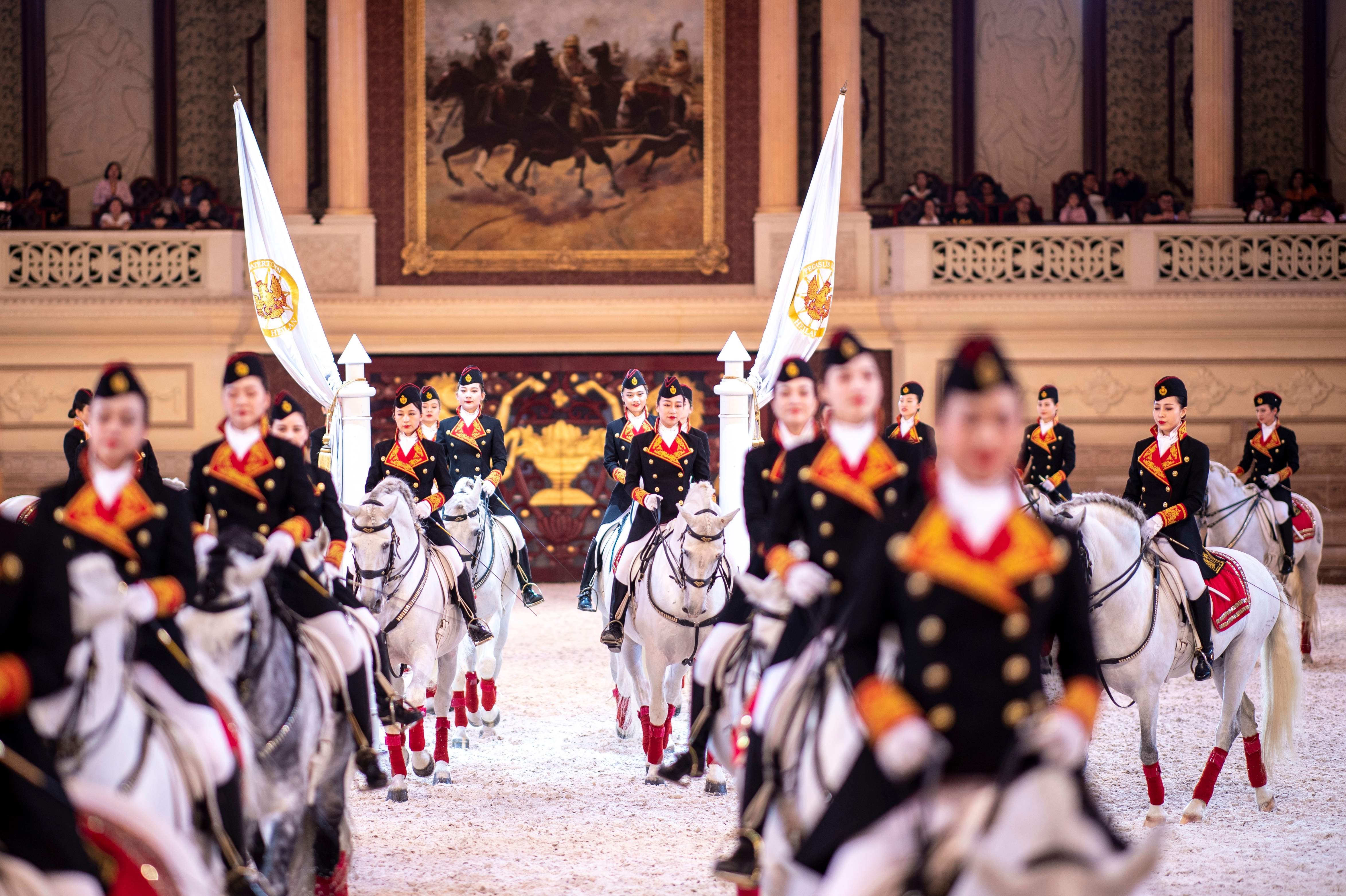
“More than a sport, it is a new experience for Chinese.”
The governmental Chinese Equestrian Association declined to give numbers, but according to the respected Horsemanship magazine’s annual report, there were 1,802 equestrian clubs in China to July 2018.
That is double the number in 2016, with the majority in northern and eastern China, notably Beijing and Shanghai, according to the magazine’s findings.
With the Chinese government stating in 2014 that equestrian sports were to be “strongly supported”, the trend looks set to continue.
Underlining the point, in January 2018, French President Emmanuel Macron arrived in China bearing the gift of a French Republican Guard horse for his Chinese counterpart Xi Jinping.
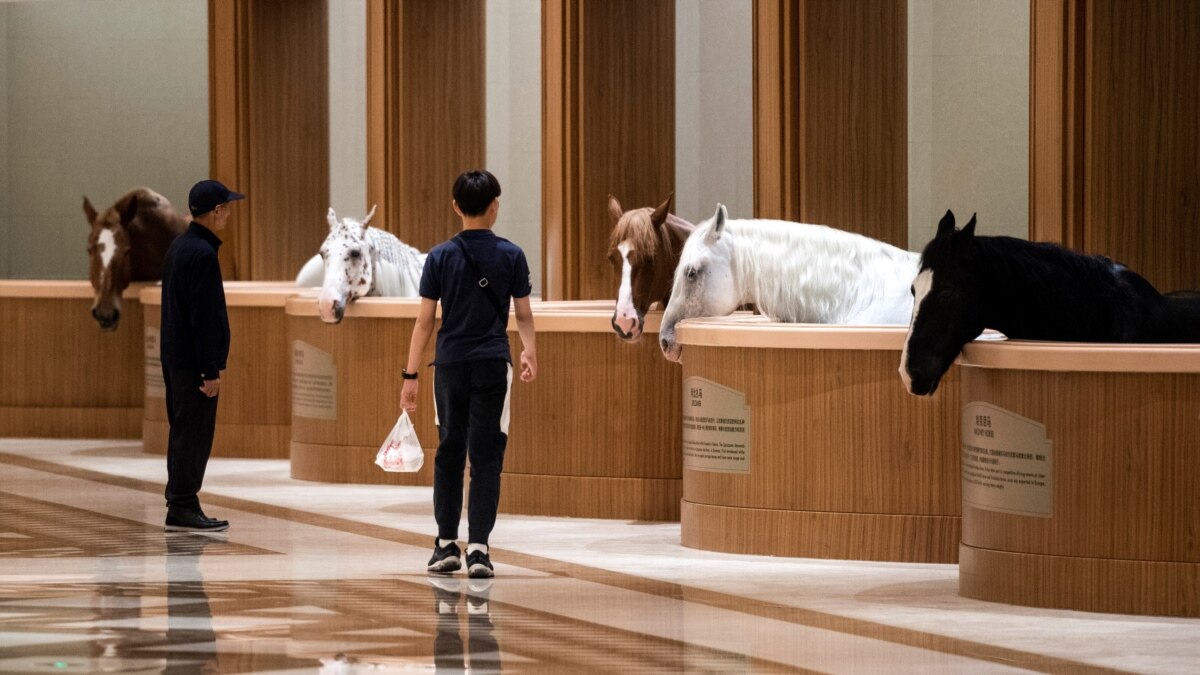
However, Horsemanship identified areas of concern, primarily the lack of media coverage and a shortage of experts such as trainers and veterinarians.
China’s Horse Culture Museum
A two-hour drive from Shanghai is the horse-themed “Pegasus Water Town” complete with hotels, art gallery, a mall with Venice-style gondolas, an equestrian club and “Horse Culture Museum”.
There are more than 400 horses of dozens of breeds imported from around the world and visitors form long queues for horse-drawn carriage tours of the resort in Jiangsu, the province west of Shanghai.
Once a week, pristine horses are paraded and perform crowd-pleasing tricks in an opulent arena designed in what the official website calls “Austro-Hungarian Empire style”.
A giant portrait of Napoleon on horseback overlooks the performance.
At one point in the show, women horse riders in white gowns and sparkling tiaras convey white carriages that would not look out of place at a British royal wedding.
It is all a far cry from 40 years ago, when China’s ruling Communist Party launched wide-ranging reforms that lifted hundreds of millions of people out of poverty.
“Forty years ago China was very poor, there was no possibility to do such a high-end sport,” said Shen Houfeng, general manager of Heilan International Equestrian Club, one of the jewels of the resort.
“But you see 40 years after reform and opening, China has seen big changes. It’s gone from a country people didn’t pay attention to, to one that everyone cares about.”
–
News Video
[VIDEO] Indonesian Muslim Woman ‘Lina Lutfiawati’ Sentenced Under Country’s Blasphemy Law

(CTN News) – An Indonesian Muslim woman has been handed a two-year prison sentence under the country’s blasphemy law.
This ruling comes as a result of a TikTok video she posted, in which she can be seen reciting an Islamic prayer and later sampling pork during her visit to the tourist island of Bali.
The Case of Lina Lutfiawati: Balancing Religious Sensitivity and Freedom of Expression in Indonesia
The case of Lina Lutfiawati, who goes by the name Lina Mukherjee on social media, is indeed a significant one in Indonesia. Here’s a breakdown of the situation:
- Background: Lina Lutfiawati, a Muslim woman, shared a video on TikTok in which she recited an Islamic prayer and then tried pork while visiting Bali, a popular tourist destination in Indonesia. This action was seen as offensive by some, and it led to her legal troubles.
- Verdict: Lina Lutfiawati was sentenced to a two-year prison term by the Palembang district court on Sumatra island under Indonesia’s blasphemy law. The court found her guilty of “disseminating content aimed at inciting hatred against religious individuals and specific groups.” Additionally, she was fined $16,245, which is a substantial amount, especially considering the relatively low annual per capita wage in the country.
- Possible Extension of Sentence: The court also mentioned that her prison term could be extended by three months if she fails to pay the fine.
- Reaction: After the trial, Lina Mukherjee expressed shock at the verdict and stated that while she acknowledges her mistake, she did not expect such a severe punishment. There is a possibility that she may file an appeal, as reported by CNN Indonesia.

It’s worth noting that blasphemy laws can vary widely from one country to another, and they often intersect with issues of religious sensitivity and freedom of expression.
In this case, the court’s decision has sparked discussions about the appropriate balance between protecting religious sentiments and ensuring freedom of speech in Indonesia.
Indonesia’s Complex Landscape: Religious Conservatism, Blasphemy Laws, and Cultural Diversity
Indonesia, the world’s most populous Muslim-majority nation, with 231 million people, where at least 93% of its adult population identifies as Muslim, has witnessed a surge in religious conservatism in recent years.
Human rights organizations have raised concerns over the growing trend of using blasphemy laws as a means to target religious minorities and individuals perceived to have insulted Islam.
Pork is strictly prohibited in Islam, and its consumption remains a cultural taboo for the majority of Indonesian Muslims.
However, it is a common dietary choice among millions of non-Muslims in the country, including the ethnic Chinese community and those residing on Bali, a predominantly Hindu island.
Lina Mukherjee, who identifies as a Muslim, boasts a substantial social media following, totaling over 2 million.
Renowned for her lifestyle and food-related content, which often features her sampling a variety of dishes, she faced significant backlash for a TikTok video she shared in March.
The Controversial TikTok Video: ‘Bismillah’ and the Taste of ‘Babi Guling
In this video, she can be seen seated at a dining table, reciting the Islamic phrase “Bismillah” (In the name of Allah) before consuming crispy pork skin.
“Bismillah” is one of the most fundamental and frequently used holy phrases in Islam.
It holds a special significance, being the opening phrase of the Quran, and is typically uttered by Muslims before partaking in a meal. It also serves as a common expression in various contexts.
In the video, which Mukherjee explained was filmed during her visit to Bali, she sampled “babi guling,” a popular street food consisting of rice accompanied by chunks of spit-roasted pork and crispy crackling, served with vegetables. Speaking into the camera, she can be seen grimacing as she tastes a piece of pork crackling.
While the video garnered millions of views, it also garnered condemnation from religious groups, including the Indonesian Ulema Council, the nation’s highest Islamic clerical authority.
The council issued a ruling denouncing the video as “blasphemous.” Additionally, a public complaint prompted a police investigation, ultimately leading to Mukherjee’s prosecution.

Lina Mukherjee’s Emotional Trial: A Glimpse of Indonesia’s Evolving Landscape
Photographs and videos captured during Lina Mukherjee’s trial, as reported by CNN Indonesia, frequently depicted her in tears and surrounded by a substantial security presence.
Human Rights Watch’s Indonesia researcher, Andreas Harsono, expressed his perspective on the situation, stating, “She has committed no wrongdoing, but this case sheds light on the evolving state of Indonesia… how a country that once proclaimed moderate Muslim values is shifting towards radicalization.” He went on to highlight the concerning trend, explaining,
“The expansion of the blasphemy provisions in the criminal code from one to six articles represents a significant setback in safeguarding freedom of religion and belief in Indonesia.
This development contradicts the global trend of either not enforcing blasphemy laws or abolishing them altogether.”
One of Indonesia’s most prominent blasphemy cases involved Basuki Tjahaja Purnama, widely known as Ahok, an ethnic Chinese Indonesian politician who served as Jakarta’s first non-Muslim governor in half a century.
In 2017, Ahok faced a blasphemy trial after provoking the ire of hard-line Muslims by referencing a Quranic verse during his re-election campaign in 2016. Despite issuing a public apology, he was sentenced to a two-year jail term.
News
[VIDEO]: Morocco’s Earthquake Aftermath: Death Toll Rises As Rescue Efforts Continue

(CTN NEWS) – A powerful earthquake has unleashed havoc and despair in Morocco, leaving a trail of destruction in its wake.
The grim toll of fatalities and injuries continues to climb as rescue teams tirelessly work to unearth survivors and casualties from the debris of once-thriving villages, now reduced to ruins.
In response to this catastrophe, a joint effort involving Moroccan authorities and international humanitarian organizations has swiftly mobilized to assist the affected region located south of Marrakech.
The earthquake, which measured 6.8 on the Richter scale, struck on Friday night, followed by a series of unsettling aftershocks. As a result, the local populace is grappling with urgent needs such as access to sustenance, clean water, and electricity.
Furthermore, the perilous mountain roads leading to these areas have been blocked by massive boulders, posing additional challenges for the relief efforts.
Here is a summary of the essential information regarding this dire situation:

Which Areas Were Most Severely Impacted?
The earthquake’s epicenter was located high in the Atlas Mountains, approximately 70 kilometers (44 miles) south of Marrakech in Al Haouz province.
This predominantly rural region is characterized by its striking red-rock mountains, picturesque gorges, and shimmering streams and lakes.
For residents like Hamid Idsalah, a 72-year-old mountain guide from the Ouargane Valley, the future appears uncertain.
Idsalah relies on Moroccan and foreign tourists who visit the area due to its proximity to both Marrakech and Toubkal, North Africa’s tallest peak, attracting hikers and climbers.
As he watches rescue teams navigate the unpaved valley roads for the first time since the earthquake, he reflects, “I can’t rebuild my home. I don’t know what I’ll do. Still, I’m alive so I’ll wait.”
The earthquake’s impact extended beyond Al Haouz, affecting various provinces, including Marrakech, Taroudant, and Chichaoua, causing injuries and fatalities.
Who Suffered the Most?
Of the 2,122 reported deaths as of Sunday evening, a staggering 1,351 occurred in Al Haouz, a region with a population exceeding 570,000, according to Morocco’s 2014 census.
In this predominantly rural area where a blend of Arabic and Tachelhit, Morocco’s most common Indigenous language, is spoken, villages constructed from clay and mud brick, nestled into mountainsides, have been reduced to rubble.
While tourism contributes to the economy, the province primarily relies on agriculture.
Prior to the earthquake, Al Haouz, like much of North Africa, grappled with a record drought that had desiccated rivers and lakes, jeopardizing the predominantly agricultural economy and way of life.
Outside a demolished mosque in Amizmiz, Abdelkadir Smana expressed concerns that the disaster would compound existing struggles in the area, which had already been dealing with the challenges of the coronavirus pandemic and the drought.
“Before and now, it’s the same,” said the 85-year-old. “There wasn’t work or much at all.”
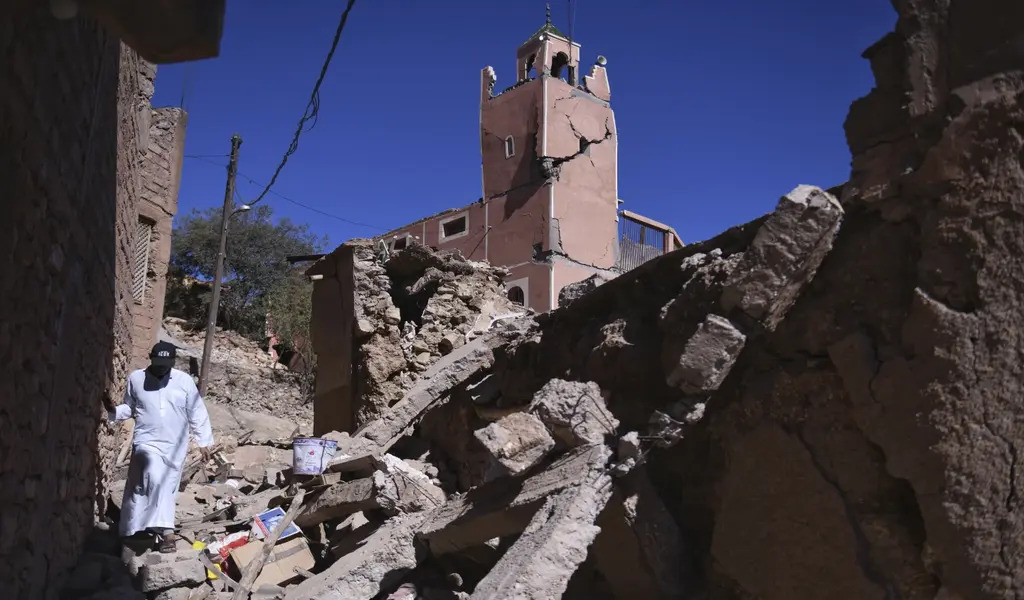
Who Is Providing Assistance?
Morocco has swiftly deployed ambulances, rescue teams, and military personnel to the affected region to aid in emergency response efforts.
While aid groups have reported that the government has not issued a broad appeal for help and has only accepted limited foreign assistance, the Interior Ministry has acknowledged international aid focused on search and rescue operations from countries including Spain, Qatar, Britain, and the United Arab Emirates.
Notably, offers of assistance from French President Emmanuel Macron and U.S. President Joe Biden were bypassed.
President Biden, during his visit to Vietnam, expressed the United States’ readiness to provide any necessary assistance for the Moroccan people.
What Is the Significance of Marrakech?
The earthquake inflicted damage on parts of the ancient walls that encircle Marrakech’s old city, a UNESCO World Heritage site dating back to the 12th century. Videos captured dust emanating from sections of the Koutoubia Mosque, one of the city’s renowned historic landmarks.
Marrakech is Morocco’s most popular tourist destination, celebrated for its palaces, spice markets, tanneries, and Jemaa El Fna, a bustling square teeming with food vendors and musicians.
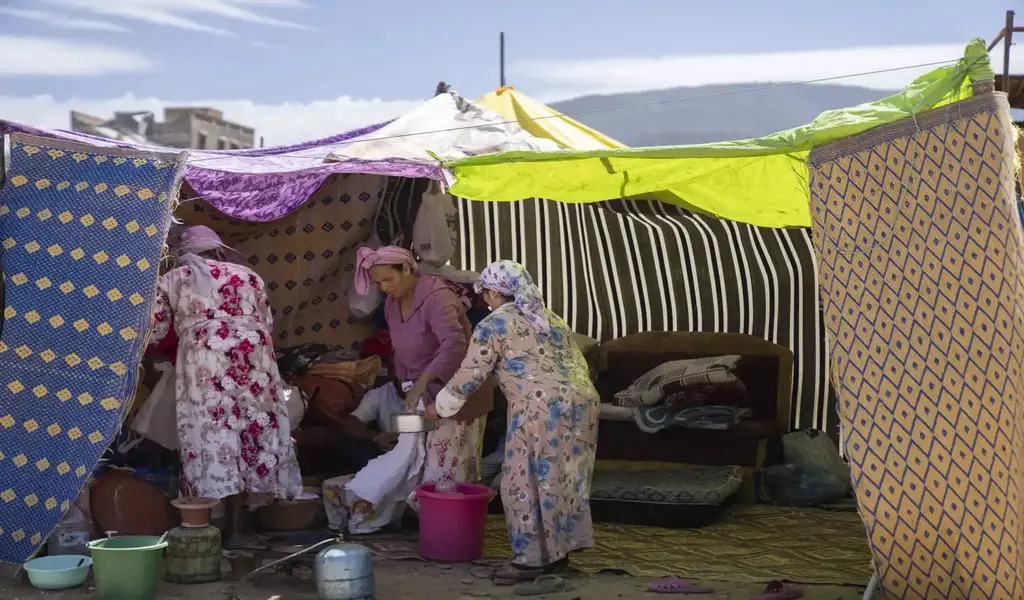
How Does This Compare to Previous Earthquakes?
Friday’s earthquake was the strongest in Morocco in over a century. Nevertheless, while such powerful tremors are rare, it is not the deadliest in the country’s history.
Just over six decades ago, Morocco experienced a magnitude-5.8 earthquake that claimed the lives of over 12,000 people on its western coast, particularly in the city of Agadir, southwest of Marrakech, which suffered extensive damage.
That disaster prompted changes in construction regulations in Morocco, but many buildings, especially rural dwellings, are still not designed to withstand such seismic events.
Before Friday’s earthquake, no earthquakes stronger than magnitude 6.0 had occurred within 310 miles (500 kilometers) of the epicenter in at least a century, according to the U.S. Geological Survey. Northern Morocco, however, has experienced earthquakes more frequently, including tremors of magnitude 6.4 in 2004 and magnitude 6.3 in 2016.
Elsewhere this year, a magnitude-7.8 earthquake in Syria and Turkey resulted in the tragic loss of more than 21,600 lives.
The most devastating earthquakes in recent history have typically exceeded magnitude 7.0, including a 2015 tremor in Nepal that claimed over 8,800 lives and a 2008 quake in China that resulted in 87,500 casualties.
What Are the Next Steps?
Emergency response efforts are anticipated to persist as teams navigate challenging mountain roads to reach the most affected villages. Many communities are grappling with urgent needs, including access to food, water, electricity, and shelter.
However, once aid teams and military personnel withdraw, the challenges confronting the hundreds of thousands of residents in the area are likely to endure.
The Moroccan Parliament is scheduled to convene on Monday to establish a government fund for earthquake response at the request of King Mohammed VI.
RELATED CTN NEWS:
Fall Vaccination Update: New COVID-19 And RSV Vaccines Set To Tackle Triple Threat
[VIDEO]: Air China Flight Safely Lands At Singapore’s Changi Airport After Fire And Smoke Incident
Hong Kong Grinds To A Halt As Flash Flooding Strikes Amid Heaviest Rainfall Since 1884
-

 News3 years ago
News3 years agoLet’s Know About Ultra High Net Worth Individual
-
Entertainment2 years ago
Mabelle Prior: The Voice of Hope, Resilience, and Diversity Inspiring Generations
-

 Health4 years ago
Health4 years agoHow Much Ivermectin Should You Take?
-

 Tech2 years ago
Tech2 years agoTop Forex Brokers of 2023: Reviews and Analysis for Successful Trading
-

 Lifestyles3 years ago
Lifestyles3 years agoAries Soulmate Signs
-

 Movies2 years ago
Movies2 years agoWhat Should I Do If Disney Plus Keeps Logging Me Out of TV?
-

 Health3 years ago
Health3 years agoCan I Buy Ivermectin Without A Prescription in the USA?
-

 Learning3 years ago
Learning3 years agoVirtual Numbers: What Are They For?